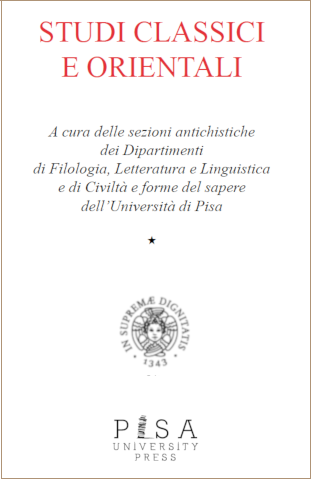Dalla tabula Lugdunensis alla tomba François. La tradizione etrusca su Servio Tullio
Abstract
From the Tabula Lugdunensis to the Tomba François. The Etruscan tradition on Servius TulliusA re-examination of all the sources allows the author to conclude what follows:1) Fest., p. 487 L., s.v. Tuscum vicum (of whose text a new reconstruction is proposed), and Claudius’ discourse in the Tabula Lugdunensis present the same Etruscan tradition on Caeles Vibenna’s arrival in Rome in the service of Tarquinius Priscus. Tacitus’ digression on Mount Caelius (ann., IV, 65), whose source is very likely another Claudian discourse, demonstrates that in Claudius’ opinion the occupation of the Mount Caelius by the Caeliani was not a hostile conquest. Therefore in the Lyons tablet occupavit means that they took legitimately possession of the Mount Caelius, placed at their disposal by Tarquinius Priscus, as the cives took legitimately possession of the ager occupatorius.2) Arnob., adv. nat., VI, 7 does not demonstrate that Mastarna-Servius Tullius killed Aulus Vibenna after Caeles’ death.3) The ‘historical’ scene of the Tomba François does not represent the slaughter of Tarquinius Priscus and the conquest of Rome by the Vibennae; on the contrary, it represents an episode of the struggle for the power at Rome, caused by an unsuccessful attempt to usurp the throne carried out after Tarquinius Priscus’ death by another Tarquinius (Cneve Tarchunies).4) Mastarna-macstrna (nickname of Servius Tullius) is an Etruscan adjective derived from the Latin magister, perhaps of the same type as some Latin adjectives derived from names of magisterial or sacerdotal offices (praetorius, censorius etc.), which often became nicknames or cognomina (Censorius / Censorinus, Augurinus, Flamininus etc.).c.letta@sta.unipi.it
Fascicolo
Sezione
Articoli


